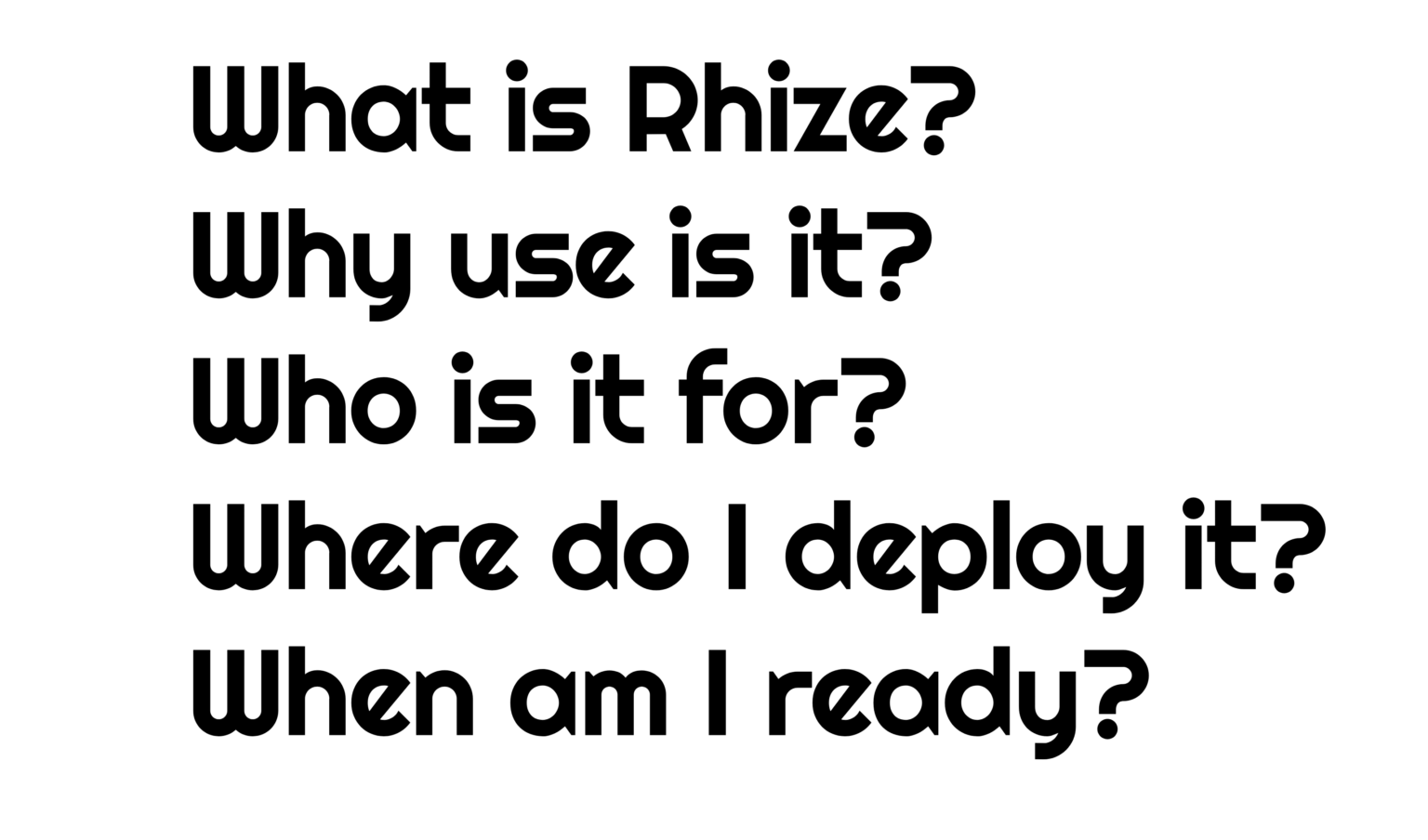Rhize is a real-time, event-driven Manufacturing Data Hub. That’s a lot of adjectives, so let’s break down what that means at a high level.
What
Rhize is an integration hub to join the data from the business, operation, and process activities in a single standardized model. Rhize is also a backend to build, extend, and replace your real-time manufacturing execution systems.
Rhize integrates data and orchestrates systems for every activity and category of your manufacturing operation. It does so in a single model, and its software architecture is driven by events.
The scope of Rhize covers all operational tasks about defining, scheduling, executing, and analyzing work for your production, maintenance, inventory, and quality operations. Yes, Rhize can do a lot.
Where
Rhize deploys on your infrastructure, whether that’s on-premises, in the cloud, or hybrid.
Rhize also uniquely excels at multi-site deployment. Your implementations can reshare their core data models, extending only for the practical realities of the particular site and use case.
Who
People who love Rhize include:
- Operations-oriented manufacturing managers use Rhize to track and assess performance, drive process improvements, and implement new manufacturing use cases.
- Enterprise application architects. Use Rhize as an event-driven backend to replace legacy applications and build new ones to define, schedule, orchestrate, track, and analyze manufacturing operations management.
- Data engineers and data analysts use Rhize as a source of high-quality, highly contextualized data to export for downstream analytical purposes.
Let’s look beyond the IT/OT split. Rhize is IT for OT.
Why
Rhize’s ontological approach changes how organizations use and think about their data.
- Its highly connected, standardized model imbues a high degree of data governance, without inconsistency, ambiguity, and duplication.
- Rhize ingests and stores data according to a common schema, ensuring that downstream operational and analytical applications have high data quality.
- Its flexible, opinionated approach to integration means that it’s ready to replace your legacy integrations.
- And finally, its data schema can be learned by anyone in the organization, promoting a greater degree of data accessibility.
In other words, in addition to serving manufacturing and analytical use cases, Rhize removes data ambiguity, increases data integrity, and democratizes access to data. The end result is more rapid innovation and an empowered workforce that can solve problems from the bottom up.
When
If you are a manufacturer with any level of digitization, you could use Rhize. However, given its wide-scope and standards-based approach, Rhize’s value is best realized at scale. Its value compounds as your use cases extend.
The process of modeling and implementation always requires some thought, so Rhize also does best in organizations that have committed, skilled people.
Besides, the obvious desire for high-quality, highly contextualized data, good candidates for Rhize have at least a few of these characteristics:
- A multi-site operation
- A desire to build an MES―or better yet, experience with the challenges of implementing an MES
- Smart, committed people devoted to bottom-up thinking
- Openness towards adopting a data standard
- The ability to see the forest for the trees
Do you check a few of those boxes?
